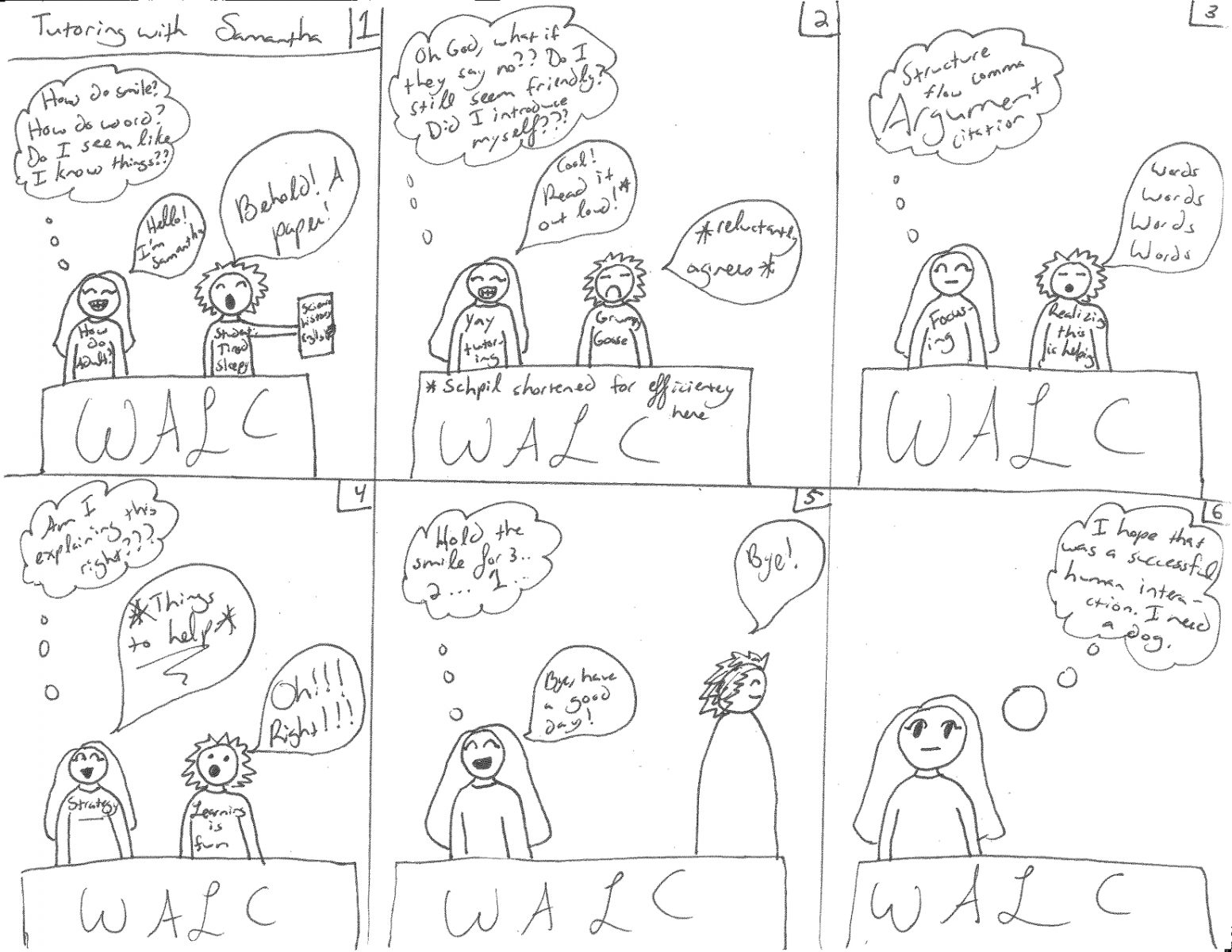Crystal P.
In a writing tutoring session, the tutee and I always talk about the overall structure of the paper first, and then get to the smaller mechanical errors, but we almost always get there. There are two things that I find myself repeating over and over during tutoring sessions. The first is the basic structure of a paper, and the second is FAN BOYS. I like to use the triangle analogy to explain paper structure and FAN BOYS to explain when to use commas with coordinating conjunctions.
There are a couple of things that I like to talk about when I talk about the structure of a paper. First, I like to use shapes to represent the introduction and conclusion to a paper. Namely, an upside down triangle for the introduction and a right side up triangle for the conclusion. The upside down triangle represents starting out more general and getting more specific as you write, ending with the thesis, which is the point of the triangle. The conclusion is the reverse of that, beginning with a restatement of the thesis at the point and getting more general as you go. Most students really seem to connect with the idea that the information in the paragraph should fit the concept of a triangle.
The second thing I almost always talk about with a tutee is coordinating conjunctions and FAN BOYS: for, and, nor, but, or, yet, so. Comma usage, as it relates to FAN BOYS, is a straightforward rule that is easy to understand. There are two rules that apply here, and the first that usually comes up most often is the use or not of a comma before one of the coordinating conjunctions in a sentence. This sentence uses the word “and” in the middle of it, and if there is a sentence after it, there should be a comma before it. If there is not a sentence after the FAN BOYS word, then there is no comma. Such as, “The dog ran after the boy and licked him.” The other rule that comes up is the use of a comma after you begin a sentence with a FAN BOYS word. So, if you start a sentence with one, put a comma after it. Students usually understand these rules pretty readily, and it helps to point out a sentence where they missed or inserted an unnecessary comma to allow them to practice without the tutor telling them everywhere to insert a comma.
I find that these two things, paper structure and FAN BOYS, are common lessons that I end up teaching in tutoring sessions. The triangle method for explaining paper structure and FAN BOYS for explaining coordinating conjunctions and comma usage are great ways to explain concepts that go a long way in improving the writing skills of the tutee.

FAN BOYS! I like it. Two good explanations for common themes in tutoring sessions. Thank you, Crystal!